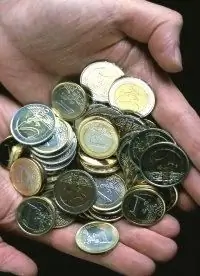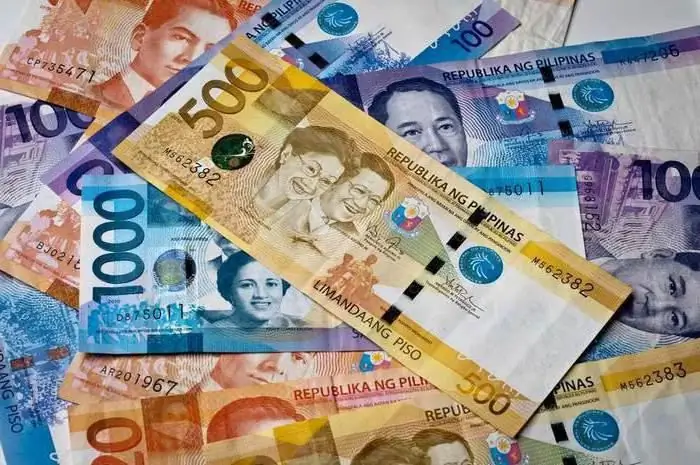2026 Author: Howard Calhoun | [email protected]. Last modified: 2025-01-24 13:10:39
Chile's currency is called the peso. In Spanish, this word means "weight" or "a certain heaviness." The modern version of the peso has been in circulation since 1975. The official currency symbol of Chile is the Latin letter S, crossed by one or two vertical bars. This sign is available in almost all text systems. Since this symbol is associated with the US dollar, the abbreviation CLP (Chilean peso) is often used to avoid confusion. The monetary unit of the South American Republic formally consists of 100 centavos. However, due to the low exchange rate of the Chilean currency, the issuance of small coins from a practical point of view does not make sense.
Old Peso
The first sample of the monetary unit of a South American country was released in 1817. The old version of the peso was equal in value to 8 Spanish colonial reais. Subsequently, the minting of copper coins with the denomination in centavo began. In 1851, the peso became the equivalent of 5 French francs, thanks to the content of 22.5 grams of pure silver. The standard weight of gold coins was 1.37 g. In 1885, it was decided to tie the currency of Chile to the British pound and establishfixed exchange rate. This happened as part of the introduction of a system of providing paper money with precious metals, known as the gold standard. In 1926, the Chilean government changed the rate from 13 to 40 pesos to one pound sterling. A few years later, the gold standard was suspended. The value of the Chilean currency fell even lower. In 1960, the peso was replaced by the escudo at a rate of 1000:1.

Banknotes (1817-1960)
The first Chilean paper money was issued by the treasury of the province of Valdivia in the middle of the 19th century. Their face value was 4 and 8 reais. In the 70s of the last century, a number of private commercial banks began issuing banknotes. In 1881, the Chilean government issued treasury notes convertible into gold and silver. This event marked the end of the issue of paper money by private financial institutions. In 1925, the issuance of treasury notes became the prerogative of the Central Bank of Chile. The denomination of banknotes of that period ranged from 1 to 1000 pesos. The inflation caused by the abolition of the gold standard required larger banknotes. In the middle of the 20th century, the issue of banknotes with a face value of 50 thousand began.

Escudos
What currency replaced the peso in Chile and what prompted the need for monetary reform? The creation of a new national means of payment, called the escudo, was part of a plan for socio-economic transformation. However, the government has not been successful in the long term. Early 70syears of the last century in Chile there was a rapid decline in production. This has led to an increase in unemployment and active withdrawal of investments from the country. The administration of President Salvador Allende tried unsuccessfully to cope with a severe economic depression.
The Escudo served as Chile's official currency from 1960 to 1975. The new paper currency issued by the country's Central Bank was a modified version of the old pesos. Their denominations were 1, 5, 10, and 50 escudos. However, unstoppable inflation, which was the result of severe economic problems, made the introduction of much larger denominations into circulation inevitable. In 1974, the Central Bank of Chile issued bank notes with a face value of 10 thousand escudos.

New Peso
After the overthrow of President Allende, a military dictatorship was established in the country. The government of General Pinochet decided to replace the constantly depreciating escudo with a new version of the peso. The reform was carried out in 1975. In the process of exchange, one thousand escudos were given one peso. Until 1984, coins were minted with denominations indicated in centavos. In the future, the need for them disappeared as a result of inflation.
During the existence of the military dictatorship, the 5 and 10 peso coins bore the image of a woman with broken chains on her hands. It symbolized the liberation from communist ideas. After the removal of General Pinochet from power, the design of the coins was changed. They featured an image of Bernardo O'Higgins, a fighter for the independence of the Spanish colonies in SouthAmerica, who at the beginning of the 19th century served as the supreme ruler of Chile for several years.
In the early stages, the Central Bank only issued 5, 10, 50 and 100 peso notes in the hope of success in fighting inflation. But later the financial authorities were forced to replace them with coins. Banknotes currently in circulation are 1, 2, 5, 10 and 20 thousand pesos.
In 2004, Chile began issuing banknotes made from polymers. This material increases the service life of banknotes several times and prevents the absorption of moisture and dirt. This was the first issue of new banknotes in Chilean history, the causes of which were not related to inflation. At the moment, only 10 and 20 thousand peso notes are still printed on paper. All other banknotes are made of polymers. Thanks to technologies that can only be used on plastic, the new banknotes have a high degree of protection against counterfeiting.

Interesting facts
Some Chilean banknotes have received unofficial names in accordance with the names of prominent personalities whose portraits are printed on them. For example, a banknote of 5 thousand pesos is known as "gabriela". It depicts Gabriela Mistral, a Chilean poet, diplomat and Nobel Prize winner in literature. The 10,000-peso bill is sometimes called "arturo" because of the portrait of Arturo Prata, a naval officer who died heroically in the 19th century, printed on it.

History of rate changes
In 1999, Chile's monetary authorities established a floating exchange rate regime. However, the Central Bank retained the right to intervene on the stock exchange in order to prevent excessive depreciation of the national means of payment. The Chilean currency against the US dollar has been steadily declining for several decades. At the end of the reign of General Pinochet, one American monetary unit cost about 300 pesos, now it is more than 600. The exchange rate of the Chilean currency against the ruble of the Russian Federation is not determined during direct trading. It is artificially calculated using the quotes of the dollar-peso pair. This way of comparing currencies is called "cross rate".
Recommended:
The currency of Finland. History, appearance, currency exchange rate

In this article, the reader will get acquainted with the currency of Finland, its history, appearance, and some other characteristics. In addition, you will find out where you can exchange money in Finland
Exchange rate differences. Accounting for exchange rate differences. Exchange differences: postings

The legislation that exists today in the Russian Federation, within the framework of Federal Law No. 402 "On Accounting" dated December 06, 2011, provides for the accounting of business transactions, liabilities and property strictly in rubles. Tax accounting, or rather its maintenance, is also carried out in the specified currency. But some receipts are not made in rubles. Foreign currency, in accordance with the law, must be converted
Philippine peso. History of the monetary unit. The appearance of banknotes and the exchange rate

This material will consider such a monetary unit as the Philippine peso. The article will introduce the reader to a brief history of the currency, its appearance and exchange rates
Georgian currency: denominations of banknotes and exchange rate against the leading currencies of the world

Currency is one of the foundations of state stability. Today the Georgian currency has become very strong and stable
Currency of Moldova: history, appearance, exchange rate

The Moldovan leu is the currency of Moldova. It was put into circulation only in 1993. What kind of money used to be in circulation among the inhabitants of the Moldavian Republic?

